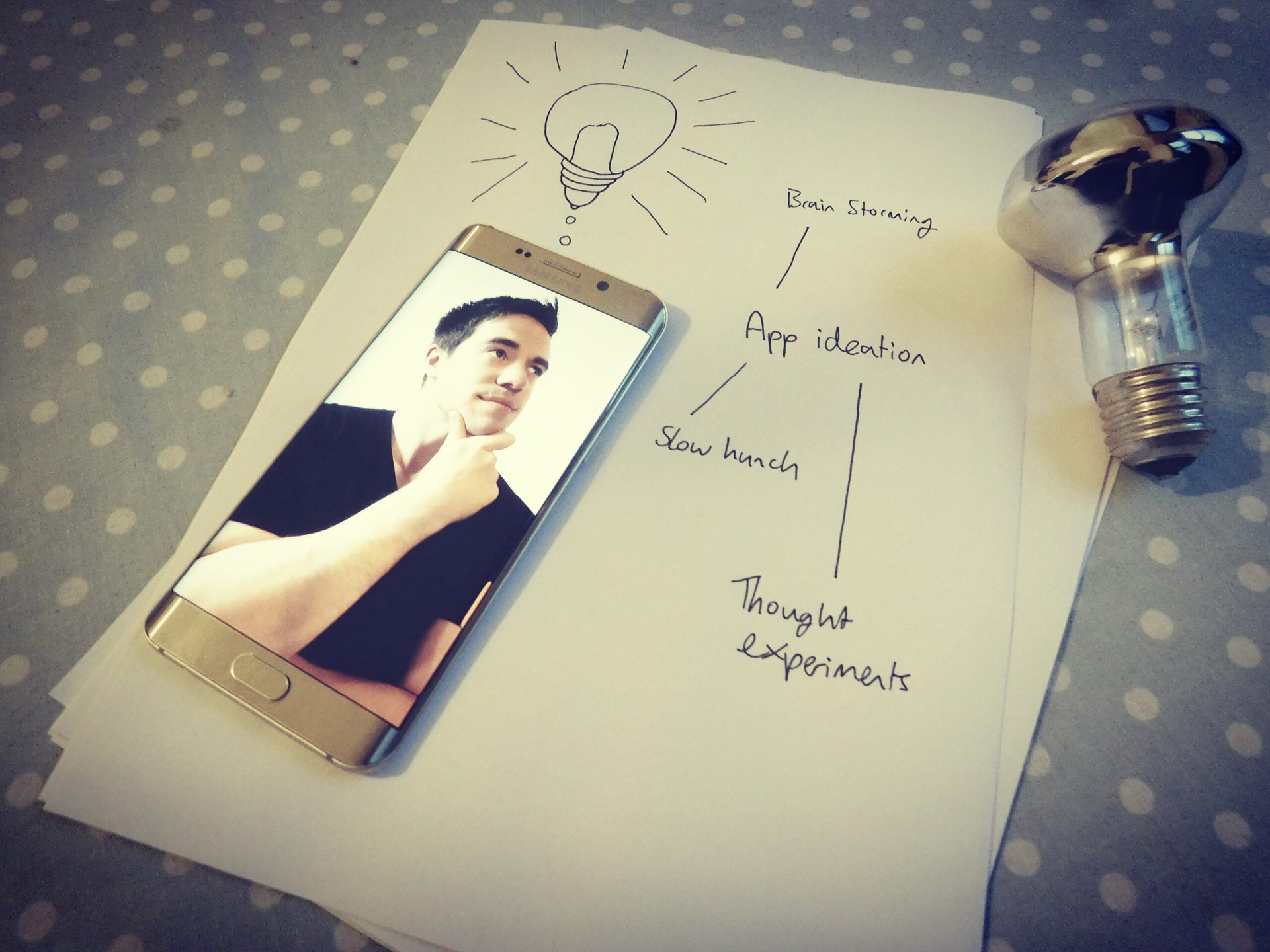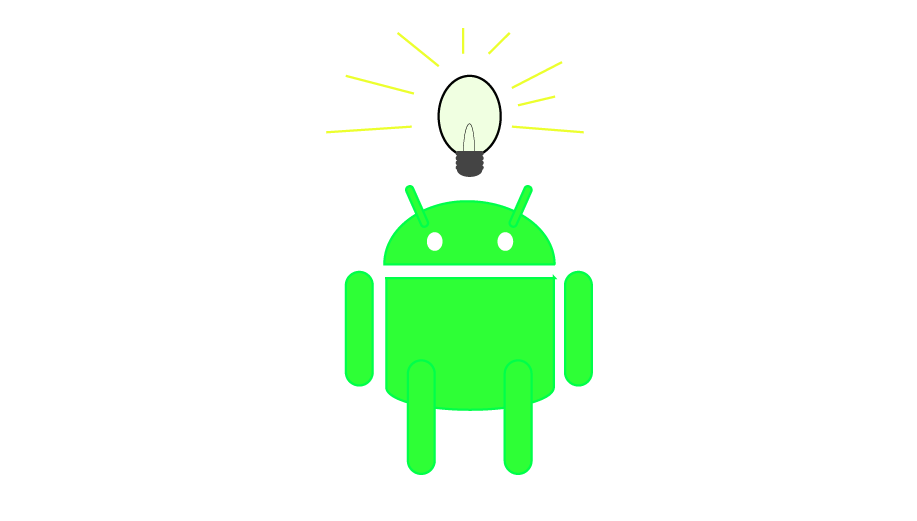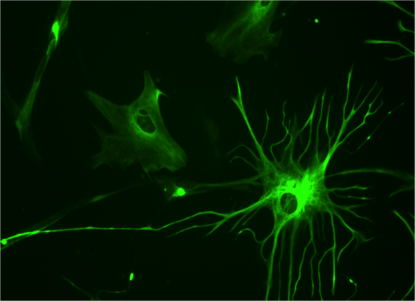Affiliate links on Android Authority may earn us a commission. Learn more.
Ideation for Android developers - how to dream up the next big app
Published onJune 24, 2016

It’s easy to advise people to take up coding, or to become developers. It’s even relatively easy to teach them to set up Android Studio, code in Java, or design a great UX. The problem though, is that none of this is going to be much use if you don’t also have an idea for the app you want to make in the first place. It’s like having a car, knowing how to drive but not knowing where you want to go with it. So it’s often only once you have a real vision for something that will help make people’s lives better (or at least amuse them for 10 minutes) that you can find the passion needed to follow through and actually build an app.
But can you teach someone to have good ideas? Or do you need to wait for that bolt of lightning to strike when you’re not expecting it? While there are no sure-fire methods for coming up with new apps (and certainly not good ones), there are definitely some strategies you can use to improve your chances of striking gold. Let’s take a look at some of them things to consider that might just help…
Scratch your own itch
One piece of advice that writers often get is to ‘write what they know’. That means not only writing about a subject they’re familiar with but also writing about characters and emotions that they can relate to. This way, they stand a better chance of creating something genuine and authentic and that really adds value for the intended audience.
The same is true if you’re trying to make an app. If you’re a fitness fanatic, then making a fitness app makes a lot of sense because you’ll understand the demands of your market and you’ll hopefully have the passion to follow through to completion. Likewise, making an app that’s relevant to the industry you work in is also a great option. For example, I know someone who made a lot of money with an app specifically aimed at stage lighting professionals!

This then also allows you to ‘scratch your own itch’ too. That means looking at your own lifestyle, hobby or workflow and then identifying where the pain points are. What are the fiddliest and most time consuming things you find yourself doing regularly? How could they be fixed? In other words, create an app that you would want to use and that would save you a lot of time. This will be something that you’ll understand how to make and if it’s something you need, chances are that other people will need it too. In general, ‘solving a problem’ is a very good way to go.
Gestate and hash it out
Scratching your own itch, like the times when you tried dividing the bill between ten of you and then on the 5th time get the idea for a bill dividing app, is one method for coming up with ideas all on your lonesome and in a flash of intuition. But according to Steven Johnson, who gave a very good TED talk on the subject, this is not actually how ideas tend to arise. Instead, they tend to take the form of a ‘slow hunch’ and then develop over time. This was true for Darwin’s Theory of Evolution and it was true for Einstein’s General Theory of Relativity (itself an extension of his Special Theory of Relativity).

So don’t be alarmed if your idea doesn’t come all at once. It’s more likely you’ll have lots of ‘semi good’ ideas but if you write these all down and keep mulling them over, they might just evolve into something amazing.
In the same talk, Johnson also mentions the importance of discussing ideas and how groups can help to evolve and adapt ideas. We tend to be very protective over our ideas because we’re worried about intellectual property – but you really shouldn’t need to worry about your friends and family stealing your app ideas! Even just talking about your idea out loud can help you to get some new perspective and this is invaluable when trying to have your breakthrough. You can watch the talk below:
Brainstorm
Brainstorming is a technique you might associate with stuffy corporate meetings but in fact it does have a lot of benefits – and especially when it comes to ideation.
The basic rule of good brainstorming should be this: there’s no such thing as a bad idea. Once you have a topic or a rough direction for your app, write down everything that comes to mind, no matter how crazy it seems. Sometimes, it’s the ideas that start off as jokes that end up developing into something actually quite good. It’s the simple act of removing constraints and creating an ‘anything goes’ environment though that allows you to be at your most creative.

A similar, related concept is the ‘mood board’. This is like a brain storm but with images rather than words and involves creating a collage of things you like and that inspire you and then seeing what direction that leads you in artistically.
Improve on existing ideas
You know, not every single idea you come up with has to be completely unique. In fact, you may find that there are a lot of advantages to coming up with an idea that really isn’t that new or even interesting. Just do something people are already doing, but do it better or differently.
For every billionaire entrepreneur there are millions more shop owners, hairdressers, chefs and builders – all successfully running their own businesses
We tend to focus on the exceptional cases like Mark Zuckerberg or Rovio but for every billionaire entrepreneur there are millions more shop owners, hairdressers, chefs and builders – all successfully running their own businesses and often making a lot of money. The same goes for apps and if you’re content to simply make a very good app that people will instantly understand, then this is usually an easier way to get lots of sales and downloads. Look at what’s already in the market and at the apps that you already use regularly; then ask yourself how you could make them that little bit better. That might mean giving them an update, adding some missing features, streamlining, or even combining two apps that you like into one single solution.
Facebook was hardly unique; it was just a better take on a social network!
Thought experiments and asking the right questions
Sometimes the secret to coming up with a good idea or solving a problem is just to ask the right questions and approach the challenge in the right way. Thought experiments help us to do this and one example might be to ask yourself “what would [insert name of person here] make?”. It could be someone you know, someone you admire… even someone fictional! This question helps you to look at a problem from a different perspective and to step outside of your normal way of thinking.
Another option is to ask yourself what you would make if you had no restrictions – if you could create absolutely anything regardless of hardware limitations, budget constraints or the laws of physics. This is actually my favorite technique and from there I then ask myself what the closest thing to that is that I could actually make.

You can also invite inspiration by being observant – try watching people out the window and looking for opportunities to change the way they do things. Likewise, try and ask more questions as you go about your regular activities. Why do you do it that way? This article delves into this concept in a bit more detail and makes for a good read.
How to increase creativity
Still not having any breakthroughs? Then you might benefit from understanding a little about the nature of creativity… Essentially, our brains and bodies have two states. ‘Fight or flight’ and ‘rest and digest’. When we’re stressed, we produce chemicals such as dopamine, norepinephrine and cortisol which increase the activity of neurons and firing across synapses. These are ‘excitatory neurotransmitters’ and they enhance focus, wake us up and help us to concentrate and remember more. We tend to be in this kind of state first thing in the morning, during an ‘adrenaline rush’, whenever we’re stressed and when we have low blood sugar.

But when we’re relaxed or calm and we feel safe and well fed, our brain fills with inhibitory, feel-good neurotransmitters to reduce activity and help us recover. These include the likes of serotonin, melatonin, oxytocin and GABA. And it’s during this time that we are also better able to let our minds wander and explore possibilities. We follow those myriad connections and just see where they take us, because nothing pressing is taking our attention. In a brain scan, this would look like more diverse activity across the entire network of our brain, rather than focused activity in just one area (this network of neurons is known as our ‘connectome’). This is when we’re at our most imaginative and it’s when we’re able to connect seemingly unrelated ideas in new ways. Essentially, creativity is believed to boil down to recombining existing ideas in new ways.
When we're relaxed, we’re at our most imaginative and it’s when we’re able to connect seemingly unrelated ideas in new ways.
So how do you put yourself in this state? One important point is to try and avoid the pressure to come up with a good idea – pressure will actually focus your mind more and prevents you from thinking in a truly creative manner. This is one reason that brainstorming works so well. It’s also why studies show that offering the incentive of a reward can actually decrease performance on creativity tasks such as the ‘Candle Problem’.
You can also improve your creativity by letting your mind wander more throughout the day. Going for walks is believed to help do this as it gives us time to think and also puts us in a calming, natural environment (this works better in a park versus a busy subway station). Even just the color green is seen to help enhance creativity, as is adopting a more supine position. So in short – relaxing is key.
Other activities that can be described as monotonous can also help, which is why we often have our best ideas in the shower. Or in Einstein’s case, while working in the Patent Office. This activates a specific pattern of activity in the brain, related to creativity and known as ‘the default mode network’.

Want to try something more elaborate? You could always try waking yourself up from the brink of sleep (hypnagogia) and jotting down what you remember like Salvador Dali! All you need is a spoon and a plate. Obviously…
Check your idea is good
If you’ve gone through this process and you now have a genuine idea, the next step is to make sure that it’s actually good. Having ideas is easy, having good ones is the difficult bit. The challenge though is that you are not qualified to judge because you’re very biased. After all, we don’t make apps for ourselves; we make them for users. So the only way to tell if your idea is good is to get people to try it out.
The only way to tell if your idea is good is to get people to try it out.
One way to do this is to create a quick MVP (minimum viable product) and then try and get people to download it, if no one does then chances are that no one would pay for a more elaborate version either. Another option is to tell your idea to a diverse range of friends and colleagues, or give them an alpha version to try. You’ll quickly be able to tell if it’s a hit or not. This is called ‘validating’ your idea and it’s a great way to avoid wasting your time on a non-starter.
Closing comments
Of course, there’s no surefire way to come up with a good app idea and even if your idea is good, that doesn’t guarantee it will be a hit either. That’s why it pays to have lots of ideas and see what sticks!
Try not to force inspiration but instead just let it come to you by mulling things over and giving yourself space to reflect. Following some of these tips might just help to encourage a breakthrough but if you generally keep one eye open, you never know when lightning will strike and you’ll spot something that could be fixed with an app. Write down your ideas, keep coming back to them and hash them out with friends.
The more you think about this stuff and the more you get stuck into the world of coding and development, the more new ideas will start to emerge!